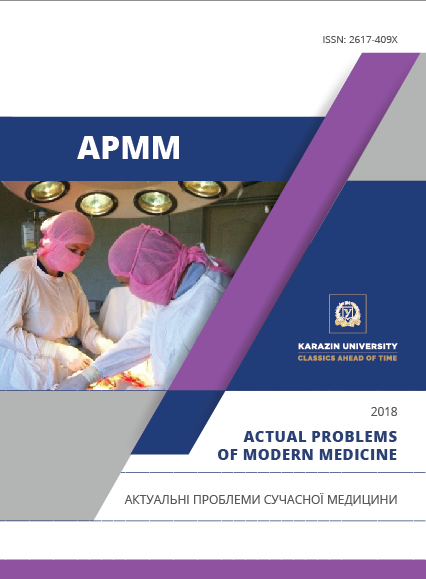CИМУЛЯЦІЙНИЙ МЕТОД МЕДИЧНОГО ВИКЛАДАННЯ ТА ВИВЧЕННЯ АНАТОМІЇ ЛЮДИНИ
Анотація
Modern medical education faces a problem of combining the latest technology with classic teaching methods. Simulation is a technique, which replaces or amplifies experiences in controlled conditions and therefore evokes or replicates substantial aspects of the real world in a fully interactive manner. The basic course of human anatomy in medical education could be recognised as the best example of implementing new educational techniques such as simulation, into the traditional medical curriculum.
Modern medical education faces a problem of combining the latest technology, procedures and information with classic teaching methods. The goal is to prepare students to become physicians equipped with the latest conceptions in medicine. Another challenge is the linking of theoretical and practical knowledge without forgetting the socio-practical aspect of medical care.
Training, from the very beginning, taking place in a reality-reflected environment (e.g. simulation-based training) seems to be a beneficial solution. Simulation is a technique, which replaces or amplifies doctor–patient experiences in controlled conditions and therefore evokes or replicates substantial aspects of the real world in a fully interactive manner [1]. Simulation techniques improve both cognitive and practical aspects of the education process in predictable and stress free conditions. The basic course of anatomy in medical education could be recognised as the best example of implementing new educational techniques such as simulation, into the traditional medical curriculum.
Завантаження
Посилання
Gaba D. The future vision of simulation in health care / D. Gaba. // Qual Saf Health Care. – 2004. – V. 13. – P. 2–10.
Lempp H.K. Perceptions of dissection by students in one medical school: beyond learning about anatomy / H.K. Lempp // A qualitative study. Med Educ. – 2005. – № 39. – Р. 318–325.
The gross anatomy course: an analysis of its importance / A. Bockers, L. Jerg-Bretzke, C. Lamp, A. Brinkmann, H. Traue, T. Bockers // Anat Sci Educ. – 2010. – V. 3. P. 3–11.
Training of practical clinical skills in surgery: a training concept for medical students / M. Russeler, R. Weber, A. Braunbeck, W. Flaig // Lehrteam des Zentrum Chirurgie, Zentralbl Chir. – 2011. – № 135. – P. 249–256.
Enhancing Preclinical Education in Japan with a Clinically Focused / H. Kanchan Rao, R. Harsha Rao // Perspectives in Medical Education, Interactive Anatomy Curriculum. Keio J Med. – 2009. – № 58. – P. 210–215.
Using checklists in a gross anatomy laboratory improves learning outcomes and dissection quality / R. Hofer, O. Nikolaus, W. Pawlina // Anat Sci Educ. – 2001. – V. 4. – P. 249–255.
The use of specially designed tasks to enhance student interest in the cadaver dissection laboratory / S. Kang, J. Shin, Y. Hwang // Anat Sci Educ. 2012. – V. 5.– P. 76–82.
The use of plastinated prosections for teaching anatomy: the view of medical students on the value of this learning resource / B. Fruhstorfer, J. Palmer, S. Brydges, P. Abrahams // Clin Anat. – 2001. – № 24. – P. 246–252.
Incorporating radiology into medical gross anatomy: does the use of cadaver CT scans improve students’ academic performance in anatomy / R. Lufler, A. Zumwalt, C. Romney, T. Hoagland // Anat Sci Educ. 2010. – V. 3. – P. 56–63.
Advanced features of whole body sectioned images / L. Tang, M. Chung, Q. Liu, D. Shin // Virtual Chinese Human. Clin Anat. 2010. – № 23. – P. 523–529.
Maran N. Low-to high-fidelity simulation: a continuum of medical education / N. Maran, R. Glavin // Med Edu. 2003. – № 37. – P. 22–28.
Simulation: not just a Manikin / M. Seropian, K. Brown, J. Gavilanes, B. Driggers // Nurs Educ. 2004. – № 43. – P. 164–169.
Al-Elq A.H. Simulation-based medical teaching and learning / A.H. Al-Elq // J. Family Community Med. – 2010. – V. 17. – P. 35–40.
Endoscopic sinus surgery simulator as a teaching tool for anatomy education / A. Solyar, H. Cuellar, B. Sadoughi, T. Olson, M. Fried // Am J Surg. – 2008. – V. 196. – P. 120–124.
McLachlan J. New path for teaching anatomy: living anatomy and medical imaging vs. dissection / J/ McLachlan // Anat Rec B New Anat. – 2004. – V. 281.– P. 4–5.




